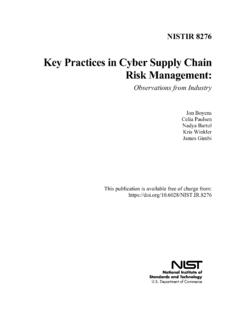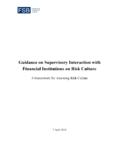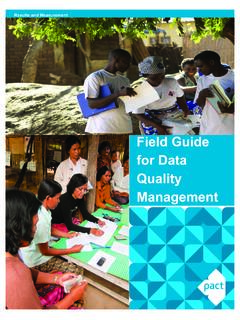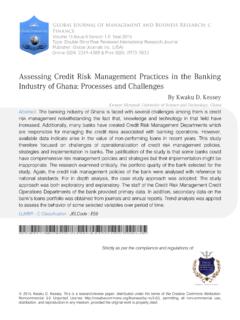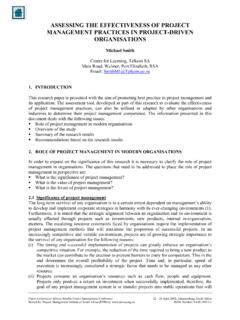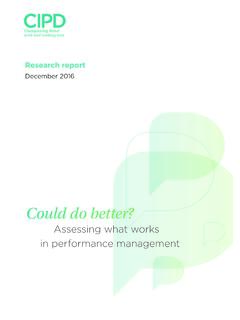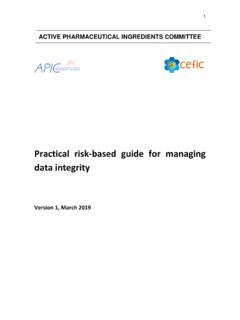Transcription of Human Resources Management Assessment Approach
1 Human Resources Management Assessment Approach January 2013. Paul Marsden, Liverpool Associates in Tropical Health (LATH). Margaret Caffrey, Liverpool Associates in Tropical Health (LATH). Jim McCaffery, Training Resources Group, Inc. (TRG). Human Resources Management Assessment Approach Human Resources Management Assessment Approach TABLE OF CONTENTS. Introduction 1. Background 1. Purpose 2. Applying the Assessment Approach 3. Users 3. Time frame 3. Methodologies and data sources 4. Guidance: How to Use the Human Resources Management 5. Assessment Approach assessing Key Human Resources Management Systems, 5. Functions, and practices Guidance on the Assessment Templates for Each Human 6. Resources Management Function Key Steps in a Typical Assessment Approach 8.
2 Human Resources Management Functions: 10. Assessment Templates Health Workforce Planning and Implementation 12. Workforce planning 13. Recruitment and deployment 16. Retention 19. Work Environment and Conditions 22. Employee relations 23. Workplace safety and security 26. Job satisfaction 28. Career development 30. Human Resources Information Systems 34. Performance Management 40. Planning Template 45. References 46. Appendix A: Example of the Adaptation of the Human 47. Resources Management Assessment Approach Appendix B: Glossary 53. Appendix C: Additional Resources and Tools 55. Human Resources Management Assessment Approach INTRODUCTION. T. he CapacityPlus partnership has developed this Human Resources Management (HRM) Assessment Approach to guide policy-makers, managers, and Human Resources (HR) practitioners toward better understanding and responding to HRM challenges facing their health systems.
3 The Approach is flexible: it can be applied to an overall Assessment of the health workforce Management environment or modified to focus on a specific problem ( , workforce maldistribution). Alternatively, it can be used to examine HRM issues specific to a health program or intervention ( , the supportive supervision of skilled frontline HIV, maternal and child health, family planning, or social welfare service providers). Additionally, the Approach engages stakeholders in key stages of the Assessment process, thereby fostering ownership and commitment as well as ensuring the Assessment 's outcomes and proposed interventions are responsive to local needs. Background What does the Approach do? The global health workforce crisis is underscored by an estimated shortfall Helps understand and respond of million health workers, which impacts access to quality health care, to HRM systems issues and attainment of the health-related Millennium Development Goals, and challenges improved health outcomes.
4 More focused attention on strengthening the Builds on and expands the Management of the health workforce is essential for improved service evidence base to guide quality and to ensure that global investments to increase the number of improvements in HRM policy, trained health workers are supported and sustained. Strong HRM systems strategy, capacity, and best provide the enabling environment within which the health workforce can be practice deployed and utilized effectively; however, HRM functions and responsibilities are generally fragmented across a broad range of key stakeholders, which Engages key stakeholders and promotes ownership can often complicate the approaches needed to strengthen these systems.
5 Is adaptable: can be applied HRM is the integrated use of systems, policies, and practices that will provide HRM system-wide or to the range of functions needed to plan, produce, deploy, manage, train, a specific intervention or support, and sustain the workforce. HRM focuses on people: how they fit program or to a facility-level and are utilized within a health system, and how they can be most effective. Assessment (see appendix A In the health sector, strong HRM is central to the provision of an effective, for a description of one such enabled, and functional health system. Moreover, targeted interventions to adaptation). strengthen HRM will yield significant impact. One example of the collection, analysis, and use of HR data to inform decision-making comes from a recent HRM professional development program in Kenya, targeted at a group of public- and private-sector HR leaders and managers it was reported that the application of data -driven decision-making increased their ability to diagnose critical gaps in Human Resources for health (HRH) and successfully advocate for additional HRH Resources .
6 Participants noted that using HRM information helped them better prioritize and plan specific HR approaches and provided the foundation to implement and sustain these approaches with additional funding and Resources (McCaffery and Adano 2009). 1 Human Resources Management Assessment Approach Purpose This Assessment Approach is intended to help users identify and address HRM systems issues. It promotes the collection and analysis of information on defined key HRM challenges, and informs the development of effective policy, strategy, systems, and process interventions to respond to these challenges. The Approach also helps generate the evidence base needed to determine the most appropriate solutions and interventions to address HRM Examples of applications challenges in a systemic, integrated, and holistic manner.
7 The HRM Assessment Approach The HRM Assessment Approach supports access to and use of the HRH has been adapted and applied to Action Framework ( ) as a means the following: of assessing and analyzing HRM issues in a comprehensive manner (see Figure 1). It is aligned with the HRH Action Framework's HRM Systems Action Carrying out a gap analysis Adapted for use in social service Field and its defined key HRM functions: workforce gap analysis in Ethiopia, Workforce planning and implementation Nigeria, and Zimbabwe Work environment and conditions Establishing an HRM baseline HR information systems (HRIS) Informing HRM mapping of the Performance Management . health workforce in Bhutan Collecting and analyzing data on each of these functions helps to provide assessing or designing HRM policy a broad overview of the HRM situation, allowing the user to further or strategy interventions assessing explore, analyze, and target specific HRM-related challenges in context.
8 HRH implementation progress It complements other HRH-related tools and guidelines (see appendix C), in Ghana and developing HRM. content for a new five-year HR. including those incorporated within the HRH Action Framework. policy and strategy; developing a new HRH master plan in Bhutan Figure 1: HRH Action Framework Strengthening an HRM function Situational Analysis or process Mapping HRM. functions and processes in Papua New Guinea and the Dominican Policy Republic Monitoring &. Evaluation Leadership Finance Improving HRM leadership, Planning Human Resources Management coordination, and implementation Systems capacity Supporting the sustainable Partnership Education functioning of the Ghana Health Workforce Observatory.
9 Implementation Improved Health Workforce Other Health System Health Services Country Specific Contexts Components Equity | Effectiveness | Efficiency | Quality Including Labor Markets BETTER HEALTH OUTCOMES. Human Resources Management Assessment Approach 2. Applying the Assessment Approach Users In general, users of this Assessment Approach will include leaders and HR. managers in government and private-sector agencies including health and development partners, nongovernmental organizations (NGOs), faith-based organizations (FBOs), ministry of health HR directors and managers, HR. practitioners at all levels, consultants, public health practitioners, program and facility managers, professional and regulatory council representatives, and other stakeholders.
10 Users ideally will already have a basic level of understanding and working knowledge of HRM systems and practices ;. however, the Approach is designed to be readily adapted and applied by non- expert users, with a minimum of additional support. Time frame The type and range of Assessment to be undertaken and the size and composition of the Assessment team will determine the actual time frame required. However, as a general rule, the core work of adapting the Approach , collecting and analyzing the data , and preparing the preliminary findings can be carried out by as little as one or two people over a period of two to three weeks or more, depending on the size and scope of Assessment needed. In terms of approximate scheduling, it may take three to five days of preparatory work for the initial desk review and planning to be completed.
